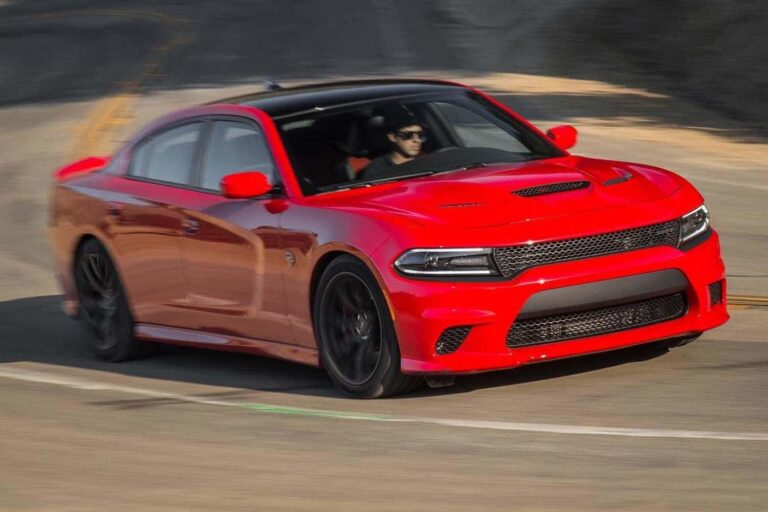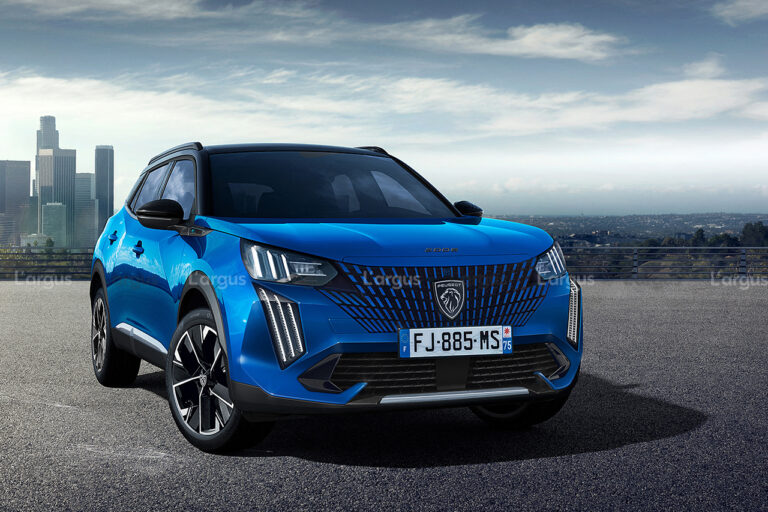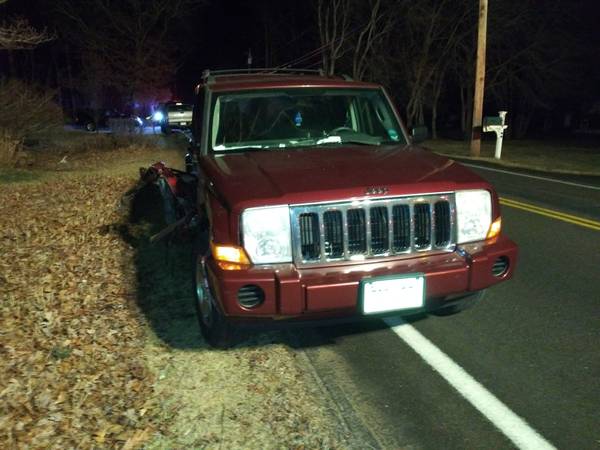Jeep Willys Overland For Sale: Your Ultimate Guide to Acquiring an American Icon
Jeep Willys Overland For Sale: Your Ultimate Guide to Acquiring an American Icon jeeps.truckstrend.com
Introduction: The Enduring Allure of the Willys Overland Jeep
Few vehicles command the respect and admiration of the Jeep Willys Overland. More than just a car, it’s a living piece of history, an icon forged in the crucible of World War II, and later, the pioneering spirit of civilian exploration. From the battlefields of Europe and the Pacific to the farms and backroads of post-war America, the Willys Jeep defined rugged utility, simplicity, and an unparalleled go-anywhere capability.
Jeep Willys Overland For Sale: Your Ultimate Guide to Acquiring an American Icon
Today, the desire to own a Willys Overland remains strong. Whether you’re a history buff, an off-road enthusiast seeking a classic thrill, a collector looking for a tangible piece of automotive heritage, or simply someone who appreciates timeless design and mechanical honesty, a "Jeep Willys Overland for sale" represents an exciting opportunity. This comprehensive guide will navigate you through the journey of finding, evaluating, and ultimately owning one of these legendary machines, ensuring your purchase is informed, enjoyable, and rewarding.
I. The Enduring Legacy: Why Buy a Willys Overland?
The appeal of a Willys Overland extends far beyond its utilitarian aesthetics. It’s a vehicle with a soul, carrying a legacy that few others can match.
- Historical Significance: The Willys MB (and Ford GPW) was the original "Jeep," instrumental in the Allied victory in WWII. Its post-war civilian counterpart, the CJ-2A, pioneered the recreational 4×4 market, laying the groundwork for the entire SUV segment. Owning one is owning a piece of that pivotal history.
- Iconic Design and Classic Appeal: The Willys’ simple, purposeful design – flat fenders, exposed hinges, and upright grille – is instantly recognizable and eternally cool. It embodies a no-frills, get-the-job-done philosophy that resonates with many.
- Simplicity and Ease of Maintenance: Unlike modern, complex vehicles, Willys Jeeps are mechanically straightforward. Their L-head (Go-Devil) and F-head (Hurricane) engines are robust and easy to work on, making them ideal for DIY enthusiasts. Parts, surprisingly, are still widely available.
- Unrivaled Off-Road Capability: Even by today’s standards, a stock Willys Jeep is incredibly capable off-road. Its lightweight, short wheelbase, high ground clearance, and robust 4×4 system allow it to tackle terrain that would challenge many modern vehicles.
- Investment Potential/Collector’s Item: Well-maintained or professionally restored Willys Jeeps, particularly the WWII-era MB/GPW models, tend to hold or even increase in value. They are sought-after collector’s items that offer both enjoyment and potential appreciation.
- Community and Camaraderie: Owning a Willys opens the door to a passionate global community of fellow enthusiasts. Willys clubs, forums, and events offer invaluable support, shared knowledge, and opportunities for camaraderie.

II. Understanding the Models: A Buyer’s Guide
Before you begin your search for a "Jeep Willys Overland for sale," it’s crucial to understand the different models and their unique characteristics.
- Willys MB / Ford GPW (1941-1945): These are the original military Jeeps, virtually identical in design, differing primarily by manufacturer and minor stampings. They are the most historically significant and often the most valuable. Expect to pay a premium for authenticity and provenance.
- CJ-2A "Universal Jeep" (1945-1949): The first civilian Jeep, marketed as the "Universal Jeep" for farm, industry, and recreational use. It retained much of the MB’s DNA but added civilian features like a tailgate, side-mounted spare, larger headlights, and a refined transmission. These are a great entry point for collectors.
- CJ-3A (1949-1953): An evolution of the CJ-2A, featuring a one-piece windshield, more comfortable seats, and minor mechanical improvements aimed at making it more "farm-friendly."
- CJ-3B "High-Hood" (1953-1968): Easily distinguished by its taller hood, necessitated by the new F-head "Hurricane" engine, which offered more horsepower than the earlier L-head. These are powerful and popular for both restoration and modification.
- CJ-5 (1955-1983): While Willys Overland ceased passenger car production in 1955 (and was later acquired by Kaiser-Frazer), the CJ-5 continued the legacy under Willys Motors, then Kaiser-Jeep, and finally AMC. It’s a more modernized version, longer, wider, and offering various engine options over its long production run. Though less "classic Willys," early CJ-5s are still highly collectible.
- Willys Wagons and Trucks (1946-1965): Beyond the iconic open-top Jeeps, Willys also produced station wagons and pickup trucks based on the same robust chassis. These offer more practicality and a unique classic appeal, often at a more accessible price point than the open Jeeps.
![]()
III. Where to Find Your Willys Overland
The hunt for a Willys can be part of the adventure. Here are the best places to look:
- Online Marketplaces:
- Specialty Auction Sites: Bring a Trailer, Hemmings, and Mecum Auctions often feature high-quality, documented Willys sales.
- General Classifieds: eBay Motors, Craigslist (local searches are key), and Facebook Marketplace can yield hidden gems, though buyer beware is crucial.
- Classic Car Sales Platforms: AutoTrader Classics, ClassicCars.com, and specific Willys/Jeep forums often have dedicated classified sections.
- Classic Car Dealerships: Reputable dealerships specializing in vintage vehicles may have a Willys in their inventory, often with professional reconditioning.
- Live Auctions: Major auction houses like Barrett-Jackson or Mecum will occasionally feature high-end, professionally restored Willys Jeeps.
- Willys & Jeep Clubs/Forums: Joining dedicated forums (e.g., The CJ2A Page, G503 for military Jeeps) or local Willys/Jeep clubs can connect you directly with sellers and offer invaluable advice. Word-of-mouth is powerful here.
- Local Searches: Check local classifieds, attend car shows, and visit local mechanic shops specializing in vintage vehicles. Sometimes, the best finds are just around the corner.
IV. What to Look For: Essential Inspection Checklist
Thorough inspection is paramount when considering a "Jeep Willys Overland for sale." These are old vehicles, and condition varies wildly.
- Rust: The Number One Enemy: Inspect the frame (especially where spring hangers attach), body tub (floorboards, hat channels, cowl), fenders, and tailgate. Surface rust is manageable; extensive rot requires serious and costly repair.
- Engine and Drivetrain:
- Engine: Look for excessive smoke (blue for oil, white for coolant), unusual noises, and significant oil leaks. Check oil pressure (if gauge works) and coolant condition.
- Transmission/Transfer Case: Test all gears (including reverse) and 4×4 engagement (high and low range). Listen for grinding or clunking.
- Axles: Check for leaks around the differential covers and wheel hubs.
- Suspension and Steering: Inspect leaf springs for cracks or sagging. Check U-joints, tie rods, and steering box for excessive play. A wobbly steering wheel is common but shouldn’t be extreme.
- Brakes: These are typically drum brakes. Check for proper function, pulling to one side, and spongy pedal feel. A full brake system overhaul is often needed on older vehicles.
- Electrical System: Determine if it’s original 6-volt or converted to 12-volt. Check all lights, gauges, and the starter. Look for frayed or patched wiring, which can be a fire hazard.
- Documentation: A clear title is essential. Seek out any maintenance records, original manuals, or build sheets. Matching VINs (frame, engine, body) can add value and authenticity.
- Originality vs. Modified: Decide what you prefer. A highly original, matching-numbers vehicle will command a premium. A modified "restomod" might offer modern conveniences but less historical accuracy. Be wary of a "Frankenstein" Jeep pieced together from many different vehicles.
- Pre-Purchase Inspection: If you’re not mechanically inclined, hire a classic car mechanic specializing in Jeeps to perform a thorough pre-purchase inspection. It’s money well spent.
V. Pricing Your Willys Overland: Factors Affecting Value
The price of a "Jeep Willys Overland for sale" can range dramatically. Several factors influence its market value:
- Condition:
- Project Car: $3,000 – $10,000 (Non-running, significant rust, missing parts)
- Running Driver: $10,000 – $25,000 (Functional, but needs work, minor rust, not show-ready)
- Nicely Restored/Show Quality: $25,000 – $60,000+ (Professional restoration, excellent condition, often matching numbers)
- Model and Rarity: WWII MB/GPW models generally command the highest prices, especially if historically documented. Early CJ-2As are also highly sought after. Later CJ-3As and 3Bs are more common and thus generally more affordable.
- Originality: Matching numbers (engine, frame, body), correct period-specific components, and an unmolested state significantly increase value.
- Geographic Location: Prices can vary based on regional demand and availability.
- Included Accessories/Modifications: Winches, PTO units, period-correct accessories, or desirable modern upgrades (e.g., power steering, disc brakes) can influence price.
Jeep Willys Overland Estimated Price Guide
| Model | Year Range | Condition Type | Estimated Price Range (USD) | Notes |
|---|---|---|---|---|
| Willys MB / Ford GPW | 1941-1945 | Project | $8,000 – $20,000 | Significant restoration required, often incomplete. |
| Driver | $25,000 – $45,000 | Running, functional, but not perfect; may need minor work. | ||
| Restored/Show | $45,000 – $80,000+ | Authentically restored, high-quality, rare historical pieces. | ||
| CJ-2A | 1945-1949 | Project | $3,000 – $8,000 | Common starting point for restoration projects. |
| Driver | $10,000 – $20,000 | Good running condition, may have some patina. | ||
| Restored/Show | $20,000 – $40,000 | Professionally restored to original specifications. | ||
| CJ-3A | 1949-1953 | Project | $2,500 – $7,000 | Accessible for first-time restorers. |
| Driver | $9,000 – $18,000 | Solid, dependable, ready for light trail or casual cruising. | ||
| Restored/Show | $18,000 – $35,000 | Excellent condition, often with period-correct accessories. | ||
| CJ-3B | 1953-1968 | Project | $3,000 – $9,000 | Popular for its F-head engine; offers more power. |
| Driver | $12,000 – $25,000 | Great blend of classic looks and improved performance. | ||
| Restored/Show | $25,000 – $45,000 | "High-Hood" models are distinctive and sought after when restored. | ||
| Early CJ-5 | 1955-1971 | Project | $2,000 – $6,000 | Wider availability, more modern starting point. |
| Driver | $8,000 – $16,000 | Good for those wanting a classic look with slightly better comfort. | ||
| Restored/Show | $16,000 – $30,000+ | Later CJ-5s with V6 or V8 swaps can fetch higher. |
Note: Prices are estimates and can fluctuate based on market demand, specific vehicle history, location, and the level of restoration/modification. Always verify condition thoroughly.
VI. Ownership & Maintenance: Keeping Your Willys Running
Owning a Willys is a hands-on experience, but a rewarding one.
- Basic Maintenance: Willys Jeeps thrive on regular, simple maintenance: frequent oil changes, greasing chassis points, checking fluids, and keeping the electrical system clean.
- Parts Availability: Surprisingly, parts for most Willys models are readily available from specialty vendors (e.g., Kaiser Willys Auto Supply, Walck’s 4WD, Vintage Military Jeeps) and even some general auto parts stores for common items.
- Community Support: Leverage the vast knowledge base of online forums and local clubs. There’s almost no problem a Willys owner hasn’t encountered and solved.
- Understanding Vintage Vehicle Quirks: Expect slower speeds, manual steering, drum brakes, and a generally more rugged ride than modern vehicles. Embrace these as part of the authentic experience.
- Insurance Considerations: Standard auto insurance may not be suitable. Look into classic car insurance providers (e.g., Hagerty, Grundy) who understand the unique value and usage patterns of vintage vehicles.
VII. Potential Challenges & Solutions
While rewarding, owning a Willys can present unique challenges.
- Challenge: Rust Remediation:
- Solution: Assess the extent of rust. For minor surface rust, DIY treatment is possible. For extensive rot, professional welding and panel replacement are often necessary. Many reproduction body panels are available.
- Challenge: Finding Specific Parts:
- Solution: While common parts are abundant, rare trim pieces or specific components for early models can be hard to source. Utilize specialized vendors, online forums, and parts swap meets.
- Challenge: Dealing with Old Wiring/Electrical Issues:
- Solution: Old wiring can be brittle and unreliable. Consider upgrading to a new, modern wiring harness (many are available pre-made) and converting to a 12-volt system for easier starting and accessory power.
- Challenge: Lack of Modern Safety Features:
- Solution: Willys Jeeps lack airbags, ABS, and crumple zones. Drive defensively, be aware of your vehicle’s limitations, and consider minor upgrades like seatbelts (if not present) and brighter LED lighting for visibility.
- Challenge: Higher Maintenance than Modern Cars:
- Solution: Embrace the DIY aspect, learn basic mechanics, and build a relationship with a trusted mechanic who understands vintage vehicles. Factor in a "vintage car budget" for unexpected repairs.
- Challenge: Limited Daily Driver Suitability:
- Solution: While some brave souls daily drive their Willys, most are better suited for weekend adventures, car shows, or light utility. Their top speeds are lower, and comfort is minimal compared to modern vehicles.
Conclusion: Driving a Piece of History
The quest for a "Jeep Willys Overland for sale" is more than just a transaction; it’s an embarkation on a journey into automotive history and a testament to enduring design. These vehicles are not merely transportation; they are symbols of freedom, resilience, and ingenuity.
By understanding the different models, knowing where to look, conducting thorough inspections, and preparing for the unique joys and challenges of vintage ownership, you can confidently acquire a piece of Americana. The roar of that L-head or F-head engine, the unmistakable silhouette, and the sheer joy of piloting such a capable and iconic machine are experiences that truly set Willys ownership apart. Welcome to the world of the original go-anywhere vehicle – a timeless classic waiting for its next adventure with you behind the wheel.
Frequently Asked Questions (FAQ)
Q1: Are Willys Jeeps reliable?
A1: Yes, for their age and design, Willys Jeeps are remarkably reliable due to their simple, robust mechanicals. However, they require consistent, basic maintenance. They are not "set it and forget it" like modern cars but are generally easy to diagnose and fix.
Q2: Are parts hard to find for Willys Jeeps?
A2: Surprisingly, no. Due to their popularity and the large number produced, many mechanical and body parts are readily available from specialized vendors, and some common components can even be found at general auto parts stores.
Q3: Can I use a Willys Jeep as a daily driver?
A3: While technically possible, it’s generally not recommended for most people. They lack modern comfort, safety features, and top-end speed. They are best suited for recreational use, light utility, or weekend drives.
Q4: What’s the main difference between a Willys MB and a CJ-2A?
A4: The MB is the original military version (WWII), while the CJ-2A is the first civilian model. Key differences in the CJ-2A include a tailgate, side-mounted spare tire, larger headlights, a slightly different transmission, and various civilian amenities not found on the military MB.
Q5: Do Willys Jeeps have power steering or power brakes?
A5: No, original Willys Jeeps (MB, CJ-2A, 3A, 3B) came with manual steering and manual drum brakes. Some owners choose to modify their Jeeps with aftermarket power steering and disc brake conversions for improved drivability and safety.
Q6: Is a 6-volt or 12-volt electrical system better for a Willys?
A6: The original system was 6-volt. While functional, 12-volt conversions are popular as they provide stronger starting power, allow for easier charging of modern accessories (phones, GPS), and use more common automotive parts (bulbs, radios, etc.).
Q7: What kind of fuel do Willys Jeeps use?
A7: Original Willys engines (L-head "Go-Devil" and F-head "Hurricane") were designed to run on regular leaded gasoline. Modern unleaded 87 octane gasoline is perfectly fine, though some owners add a lead substitute or ethanol-resistant fuel additive for peace of mind, especially with older fuel lines and seals.



